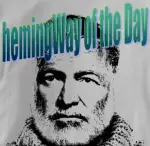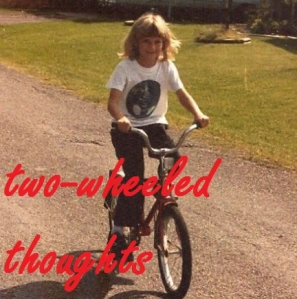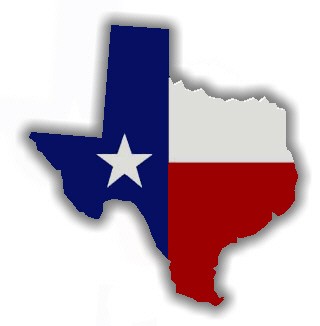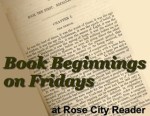Pops is catching up with another book I read several years ago (more than five, in fact, which explains why I was so rusty in reconsidering this story). Please note that my review was spoiler-free, where this one does contain spoilers, after a break – I’ll make that clear in the body of the text, though. Here’s Pops on The Brave Cowboy.
 Your review covered the high points well. So what did I especially like?
Your review covered the high points well. So what did I especially like?
I too was teased by the suggested connection between Burns’ childhood and Fire on the Mountain; I really wanted to see them link up. But I read it now simply as one of those early good ideas an author grabs later and develops into a full story.
I didn’t remember from Abbey such wonderful phrasing as I found here. As you note, the manhunt scenes in the mountains stand out; one cannot miss Abbey’s love of the place, reflected in his care with words.
It was refreshing to hear Burns’ “grumbling in typical Abbey fashion” as you mention, just the general tone of alienation that Abbey does so well. And I appreciated Paul Bondi’s extended monologue in jail, essentially reminding Burns of the passion & integrity behind their earlier anarchist bond:
Jack, old friend, let’s not go on kidding each other all afternoon. We have too many important things to talk about… I don’t see the world getting any better; like you, I see it getting worse… I see my own country overwhelmed by ugliness and mediocrity and overcrowding…
When Burns first reaches the mountains after his escape:
For the first time in nearly two days and nights he felt himself to be a whole and living creature, a man again and not a derelict stumbling through a mechanical world he could not understand.
I was both admiring of and frustrated with Jerry; she is a character with more potential than Abbey allowed (or was capable of providing a woman character?). She was too ‘good’ for Burns (in several senses?) and with fuller explication it likely would have gone the way of Abbey’s usual dalliances. Perhaps it was best left to our imaginations.
I thought Sheriff Johnson was a particularly rich character, not stereotyped as much as realistic and conflicted. He earned my sympathy as a proxy for the tragically independent but tradition-bound westerner from a romantic past, almost Stegner-like, now confused victim of the world Burns sees more clearly. He in fact has more in common with Burns than other characters. In all of his scenes, Johnson is prone to lapse into reverie, wrestling with his thoughts as others bustle about.
In a favorite passage, he takes a moment away from manhunt-madness, as he drinks from the same modest spring where Burns had recently stopped:
Johnson remained for several minutes on his knees before the spring… listening, scarcely thinking, surrendering himself to strange and archaic sensations; he remembered his childhood, forty years gone, and a dim sweet exquisite sorrow passed like a cloud over his mind.
After hearing from a bellowing and overbearing General by radio, “Johnson felt a peculiar shame, not for himself but for his kind.”
In a wonderful segment, Johnson reflects on the imposing terrain. The extended passage is framed at start and finish by a tumbleweed, “the dry almost weightless hulk… bounced over sand and rocks, coming towards them.” This triggers reflection; Johnson knows Burns is in his element in these hills, while Johnson and increasing numbers of searchers are
waiting in the dust or blundering heavily around in the absurd labyrinth of boulders and canyons and thorny chaparral… [Johnson is] conscious of a vague annoyance… general undifferentiated social resentment of this mountain, an impatience with its irrational bulk and complexity, its absurd exasperating lack of purpose or utility… a piece of sheer insolence.
Thinking about it, Johnson began to smile; he scratched his neck and chuckled aloud.
He hears his thoughts mocking himself, amused at his frailty, envying Burns’ comfort in such a place. The passage ends with an entire paragraph describing the nimble tumbleweed’s path, bouncing over and around him in the wind, heading off up the canyon into the hills – like Burns.
Now, for the often interesting story of the edition I read. Mine is published in 1989, the year Abbey died. (Amazon lists my ISBN [0-8263- 0448-6] but it is not the same imprint; they have no version with the Lambert essay I describe below – how is that?! The image (above) matches my cover.)
In following that trail, I did find other interesting tidbits. The original full title is The Brave Cowboy: An Old Tale in a New Time. Three different chapters were published as essays in periodicals:
- 1980: Ch. 4, the initial jail scene with lots of repartee interaction between various eccentric jail-mates.
- 1984: Ch. 11, where Burns returns to the Bondi ranch after escaping from jail, his rushed final interlude with Jerry.
- 1995: Ch. 14, a longish one, the first scene where Burns has reached the mountains, rich with description and his stalking the deer; it ends with the sheriff’s initial foray into the hills before the day-long manhunt; the two men are close and sensing each other, both knowing there is more to come.
Further, from the Google Books version of Ann Ronald’s The New West of Edward Abbey (2000) I learn she has done some research for us on that connection with Fire on the Mountain.
- Brave Cowboy mentions the name of Burns’ grandfather in the FBI investigation: Henry Vogelin, the grandfather in Fire on the Mountain (I missed this!). The sheriff sends a deputy to interview Vogelin, but we hear no more about him. Given the gap in time between the books, I still think Abbey is just playing with us: two stories, with fun, tantalizing links.
- Quoting Ronald: “the pompous colonel in Fire bears the same surname as the arrogant general in Cowboy… although spelling differs surely the selection of Desalius/DeSalius for two supercilious military men was no accident.”
- The owner of the general store near Vogelin’s ranch in Fire is Hayduke!!
The Afterword: my copy also carries a 1977 copyright for the ‘Introduction’ by Neal Lambert, a Brigham Young U. professor of English & American Studies. Interestingly, in my edition his essay appears as the Afterword. (There is no Introduction; I actually agree strongly with this change, given the content of his contribution.)
Lambert covers a few interesting topics in his 7-page comments:
He describes the book’s “narrative pattern that has become a cliché of western writing through years of long use in pulp fiction and Saturday matinees.” He makes a case for that, and I had thought of it with the extended manhunt, a simple showdown formula, the cowboy symbolizing a creature in his native habitat, being hunted by the bumbling but overwhelming forces of modern technology and amorality who see only “This godawful stinkin’ place.” (Too bad the Indian tracker was not more developed, with contradiction and nuance; but again, likely too much for Abbey and/or his chosen form here.)
He spends too much time ‘suggesting’ and describing what we now consider typical Abbey’s themes of nature and alienation, etc, etc; quite a jarring flag of 1977 perspective. That said, he also quotes extensively from the text, including some I have already highlighted.
He comments, as neither you nor I did, about the “interpolated chapters, those brief irregular flashes revealing the movements of the semitrailer load” and interprets its sense of “the inexorable force of destiny… inevitable destruction of the freedom and simple goodness of the natural life.”
He also reminds us of the important balance Abbey provides the story with many examples of good people with good relationships, with the effect of this sense: “There is much of human sympathy, generosity, and goodness in the world.” We see this with all the central characters, and others including Paul’s judge, truck driver Hinton and of course Sheriff Johnson.
And yes, Lambert agrees with me about Johnson, with interesting additions. He playfully (and somewhat ineffectively) tempers his academic analysis by observing this is not “another Moby Dick. Jack Burns is no Ishmael [not Quinn’s, Melville’s!] and to load that poor vernacular cowboy with such a heavy philosophical burden would make it impossible for him to even mount his horse, let alone ride off across the country.”
Here’s the really intriguing revelation in Lambert’s essay, raising a question for every edition after 1977. He has just addressed the question of whether Burns’ efforts (and thus his life) were in vain after failing to rescue Paul or safely escape himself, and concludes, “His effort was neither ineffectual or in vain. This particular meaning is suggested in the first and last pages of the book. For this new edition, Abbey requested that the lines announcing Burns’ death be dropped. Broken though he is, the cowboy must be allowed to continue.”
This of course begs the question of how the endings are different! From everything I can find, all copies after 1977 have the same ending as mine. So, I submitted an inter-library loan request for an earlier edition. Thanks again to the library network: from little Jamestown College in North Dakota, I just received a beat-up first edition Brave Cowboy (1956) – with a handwritten notation from a librarian: “please handle with care” (I did.) Remarkably, it turns out, Abbey’s ‘revised ending’ in 1977 consisted of the removal of only one sentence, the second-last of the book, and the one that declares Burns dead.
So, what of it? I found Burns’ death unsurprising; one always knows Abbey’s characters (fiction and non-fiction) face an uphill battle. Even the directness of having a modern mechanical force as the fatal weapon was to be expected.
What struck me particularly was how Abbey returns us directly to Burns’ close relationship with Paul, as Burns repeatedly speaks to him in his dying stupor. It must be with purpose that Abbey balances the story of a socially-alienated cowboy-outlaw with a traditional, humanizing buddy story. Perhaps the original ending detracted from this?
Or maybe he just wanted the opening for a future book (a sequel)? Or maybe he just couldn’t bear to lose his hero… Abbey strikes me as susceptible to emotional decision-making. (Recall the indulgence of Black Sun.)
I appreciate your reminders. Much of what you refer to here, Pops, felt dimly familiar but no more. So many books between now and then… I have more Abbey waiting on my shelf for when I find the free time (ha). Indulgences and susceptibility to emotions aside–hey, we’re all human–this is a writer I want to return to. Thanks for this studied response.

















